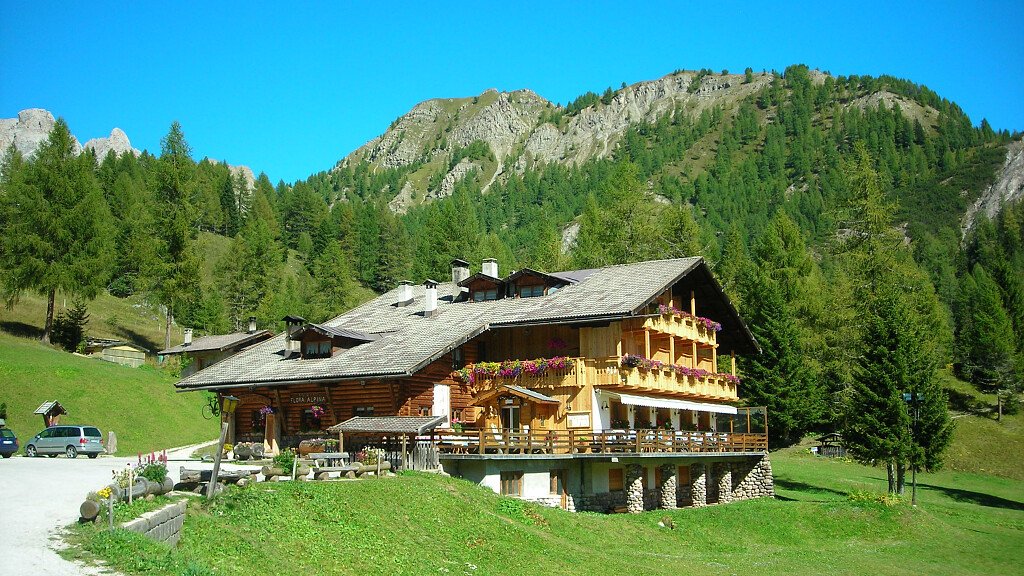Carnival in Trentino, Alto Adige, Belluno and Friuli is a very popular festival: parades of elaborate allegorical floats, dances, theatrical performances, wooden masks and old costumes - often in the sign of popular tradition - enliven this Catholic festival, which originated in ancient times to celebrate the end of winter, and whose spirit has remained unchanged over the centuries.
What makes Carnival in the Dolomites so special is often the presence of allegorical figures, such as the Matazìn, the Gnaga or the Rollate of Comelico, Val Zoldana and Sappada, the Zussl and the Egetmänner in Alto Adige, or the Matoci of Val di Fiemme, often characterised by simple costumes with noisy cowbells and faces that are sometimes only painted, sometimes monstrous, representing in a funny and mocking way ancient peasant customs, or the difficulties that the people of the past were subjected to.
Carnival masks
A few curiosities about the most famous and bizarre Carnival masks in Alto Adige, Trentino, Belluno and Friuli.
The Matazìn, the traditional mask of Comelico Superiore (BL), whose name corresponds to "Mattacino" and derives from the word "mad". Mattacino was a slightly mad character from Venice who used to throw perfumed eggs with slingers. Matazìn is therefore a joker who loves to amuse and play tricks on people. That is why he usually does not wear a mask, but a colourful blue, red and green costume with knee-length puffed trousers, a top hat decorated with pearls and colourful ribbons, striped socks and flowers on his shoes. Until the 1930s, the Matazìn wore a pink wooden mask, but it was soon discarded due to its uncomfortableness. During the Carnival parade in Dosoledo in Comelico, the Matazìn performs a series of traditional dances and distributes coloured sugared almonds.
La Gnaga, the typical mask of Val di Zoldo (BL), depicts a curvy woman with huge wooden clogs who, despite her age, carries a young man on her back in her basket. A unique mask that represents two different characters, an allegory that symbolises the passing of time, but also the arrival of the new year.
The Zinghenesta, the Carnival parade of Canale d'Agordo in the Belluno area. The "zinghenesta" represents a female figure, i.e. the most charming girl in the village. The climax of the festival occurs when the girl does a dance together with her suitors and other typical figures of the Belluno carnivals, such as the Lachè and the Matiéi.
The Zussl of Prato dello Stelvio are dressed in white with colourful papier-mâché bows and flowers and have cowbells tied to their hips that can weigh up to 20 kg. According to tradition, the noise made by the Zussl's heavy cowbells helps to drive away evil spirits and the winter frost, as well as to awaken the wheat, with the hope of a new year.
The Matòci, the allegorical figures of Valfloriana (Val di Fiemme - Trentino) who wear wooden masks on their faces and colourful clothes adorned with ribbons and lace. Announced by the sound of cowbells (bronzini) tied with a belt to their hips, they open the carnival procession and are the first to arrive in the village. Tradition has it that the Matòci have to overcome a series of obstacles and engage in a series of satirical 'repartees'. When they enter the village, they find their way blocked by some villagers who subject them to some bizarre questions to understand who is hiding behind the mask. With great skill and dexterity, the Matòci answer with witty and clever jokes.
The typical masks of the Carnival of Sappada, in Friuli, are the Rollate, the Paurn (peasants), the Pettlar (poor) and the Hearn (lords). The three Sundays preceding Lent are dedicated to the traditional figures of the Poor, the Peasants and the Lords. The male figure of the Rollate, on the other hand, considered the main mask of the Sappada carnival, is present both on the three Sundays (Pèttlar sunntach - Poor Sunday, Paurn sunntach - Peasants' Sunday, Hearn sunntach - Lords' Sunday) and on all the days between Poor Sunday and midnight on Shrove Tuesday. The Rollate, whose name derives from Rolln, meaning the noisy cowbells that are tied to his hips by a chain, is the only mask that plays a leading role on Shrove Monday. With his face covered by a wooden mask with a moustache and thick, dark eyebrows, he wears a heavy, dark sheepskin coat, wide trousers with horizontal white and brown stripes, hobnailed leather boots and grey or brown mitten gloves. A special feature of the costume is the handkerchief tied around the neck and placed over the fur, which changes colour according to the marital status of the wearer: red for married men and white for single men. The Rollate usually carries a broom, which is used in a threatening or joking manner. In the past, the Rollate was an evil mask that avenged the offences and wrongs suffered; today, however, it is a guide-mask that opens the procession and announces the entrance of the other masks in groups into the houses at the time of the visits.
The Egetmann is the traditional and unique carnival parade of Termeno sulla Strada del Vino, South Tyrol, which takes place on Shrove Tuesday of every odd-numbered year. The parade does not look like the classic parade with floats, but tells a story and each figure has a precise role and task to perform. The most important of them all are: the "Egetmann Hansl", a straw puppet; Wilder Man "the savage", a demon wearing a rabbit-skin mask; the "Schnappvieh", an earless crocodile representing winter; "Burgl" and "Burgltreiber", a woman and a man chasing each other. The central figure is the Egetmann Hansl, who starts the procession and is always accompanied by his bride. The peculiarity of this ancient tradition is that only men can participate, so even the only female figures are actually men in disguise. The significance of these two masks is that they announce the imminent marriage to the people of Tramin. The only figure, however, who has to wear a mask is the Wilder Mann, the wild man, i.e. an ancient demon who will eventually be killed (for show) by his hunter. In tradition, this gesture signifies the end of the winter season and the beginning of the warm season. The figures of the Burgl and Burgltreiber, both with soot-stained hands and cheeks, depict respectively a female figure carrying her child in a basket and a man with a stick used to beat the woman. The man and the woman represent the hunting of evil winter spirits.
The traditional masks of the Ladin Carnival in Val di Fassa are mainly three: Laché, Marascons and Bufon. The Laché is both the ambassador and the guarantor of the masks, the one who leads the carnival procession with his sceptre full of coloured ribbons. His costume, a mixture of men's and women's clothing, is adorned with an ornate headdress, a mask held in his hand and silver necklaces, pendants and chains. The Marascons are the large figures who always walk around in pairs, never speak, only perform in dance steps, making the cowbells tied to their leather belts ring out. They wear white socks, leather trousers, a belt, a sceptre and a hair adorned with chains bearing the heels of the Habsburg Empire. In their right hands they hold a wooden mask, the so-called 'facéra'. The real star of the carnival is the Bufon, the personification of a crazy man who offends and mocks people. Dressed in coloured socks, an apron around his waist and a hat adorned with flowers and ribbons, in his hands he always holds the "stica" (a wooden stick) and the "cucalòch" (a telescope with which he looks at the vices and virtues of those present).

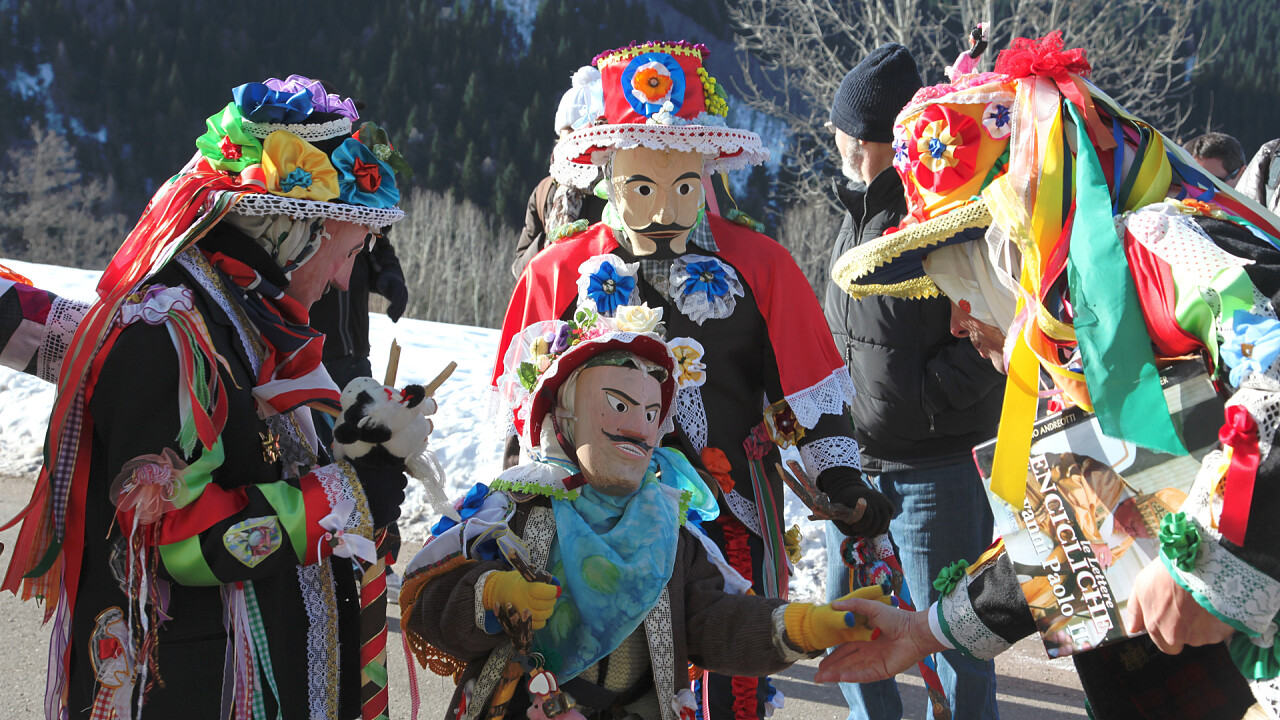
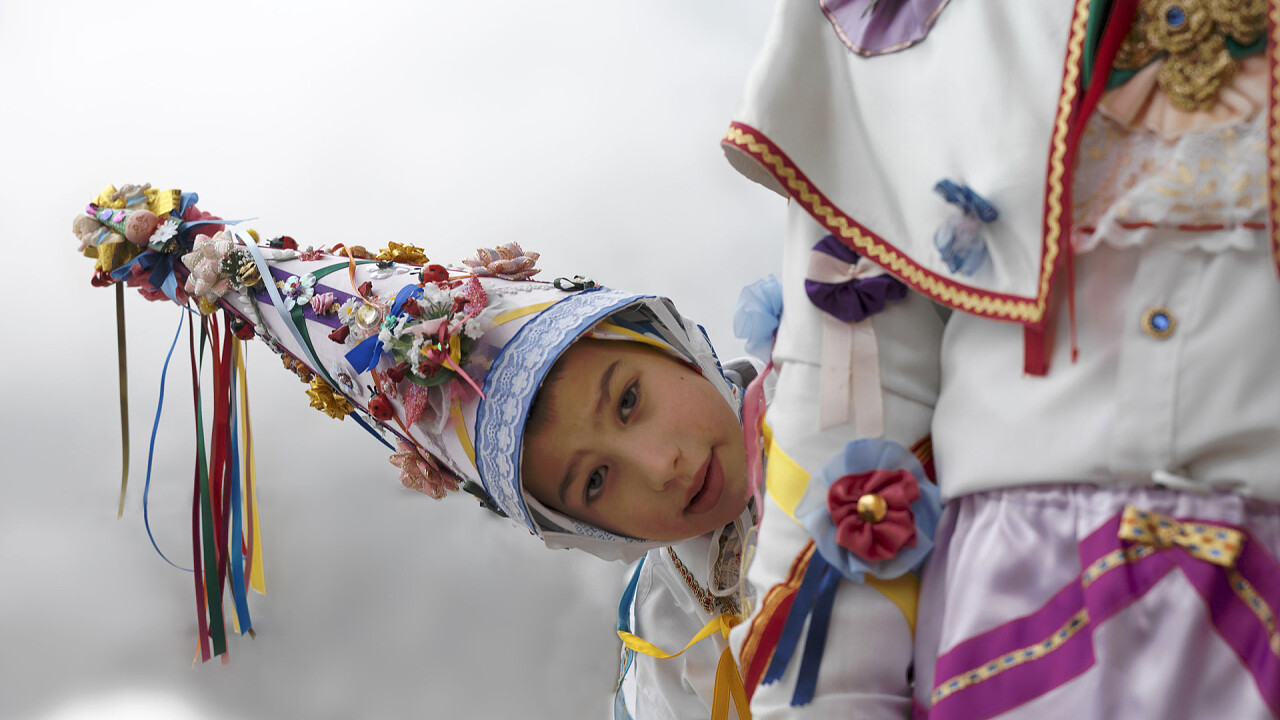

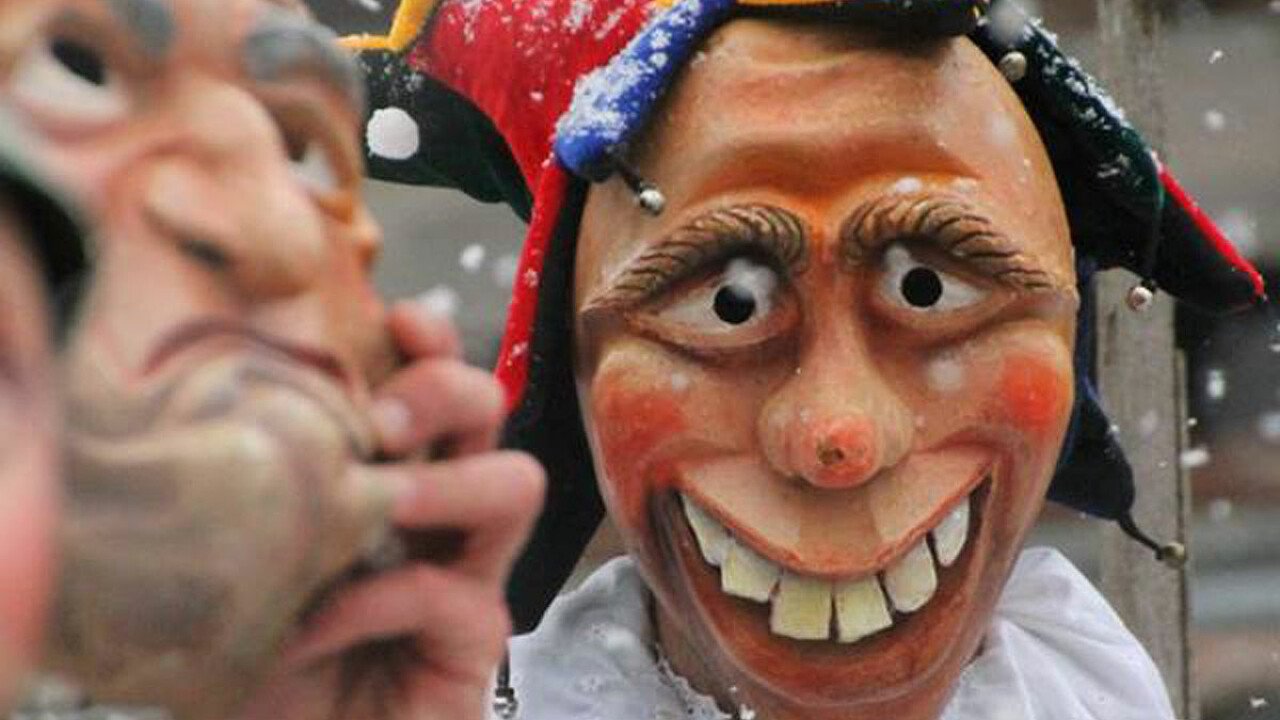
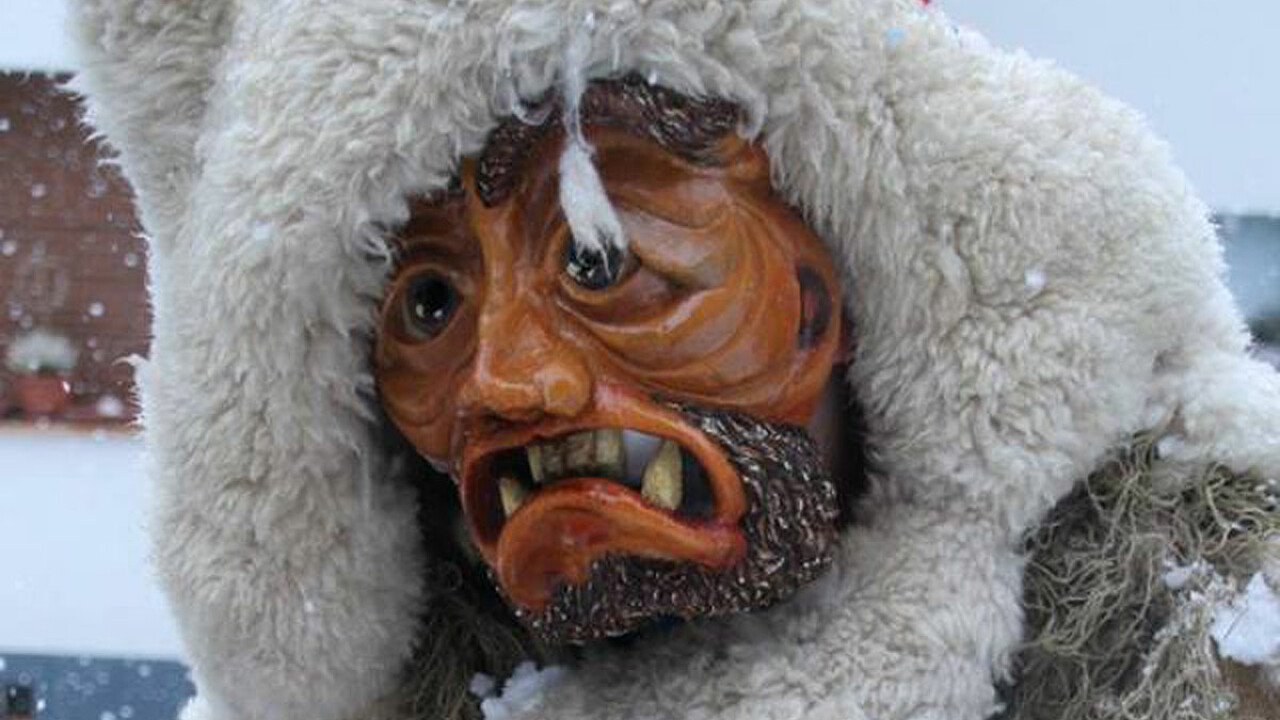
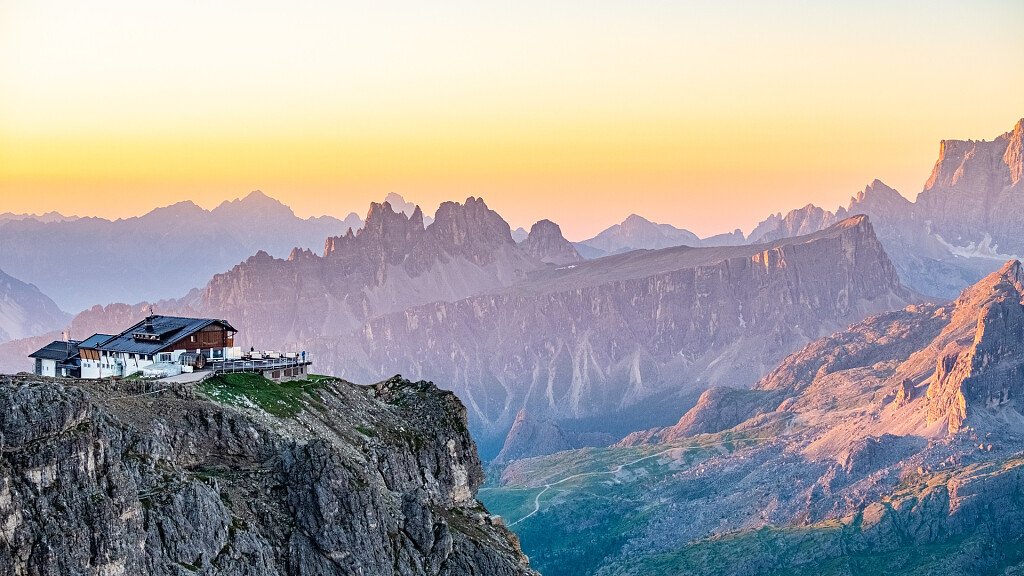


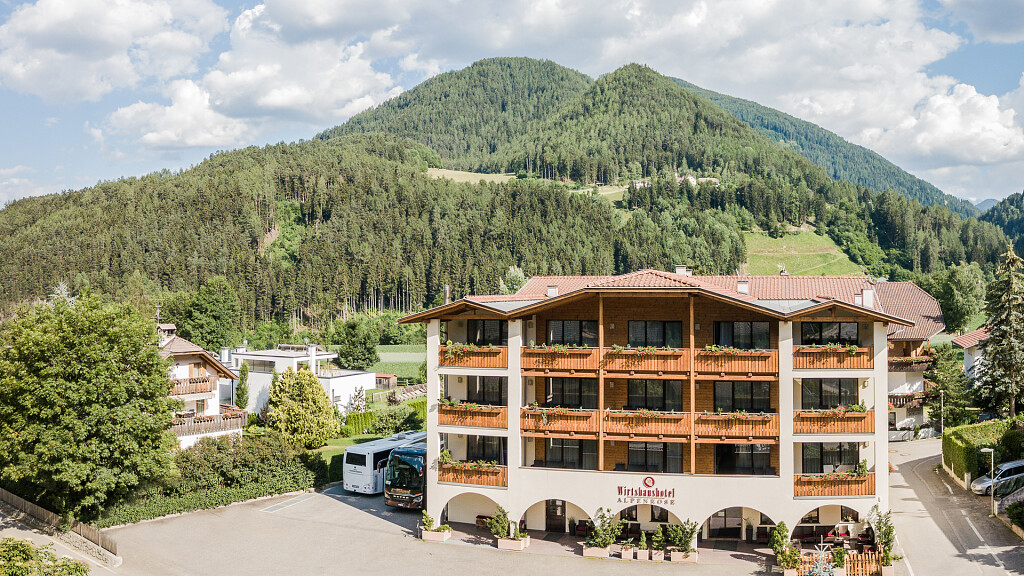
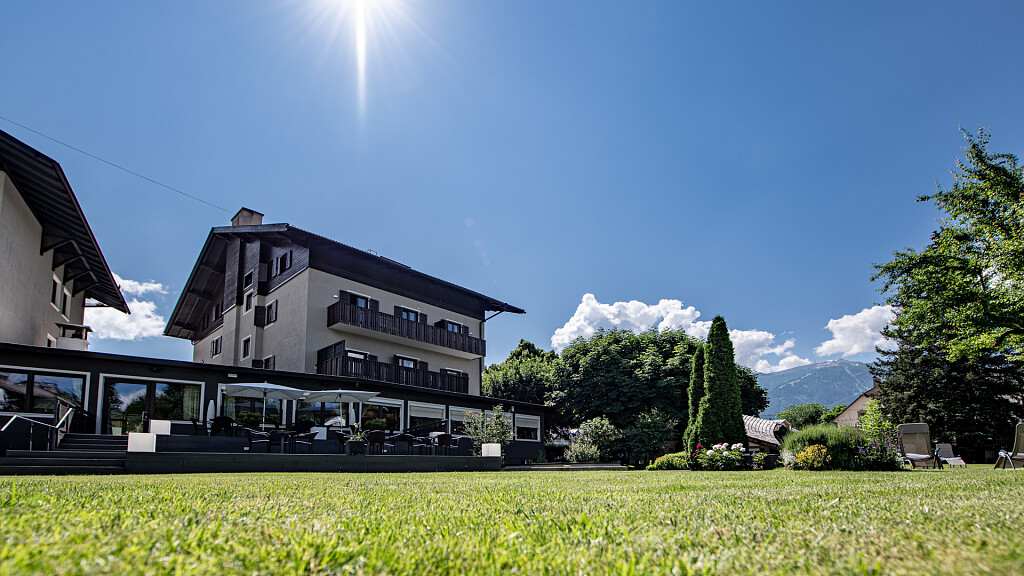
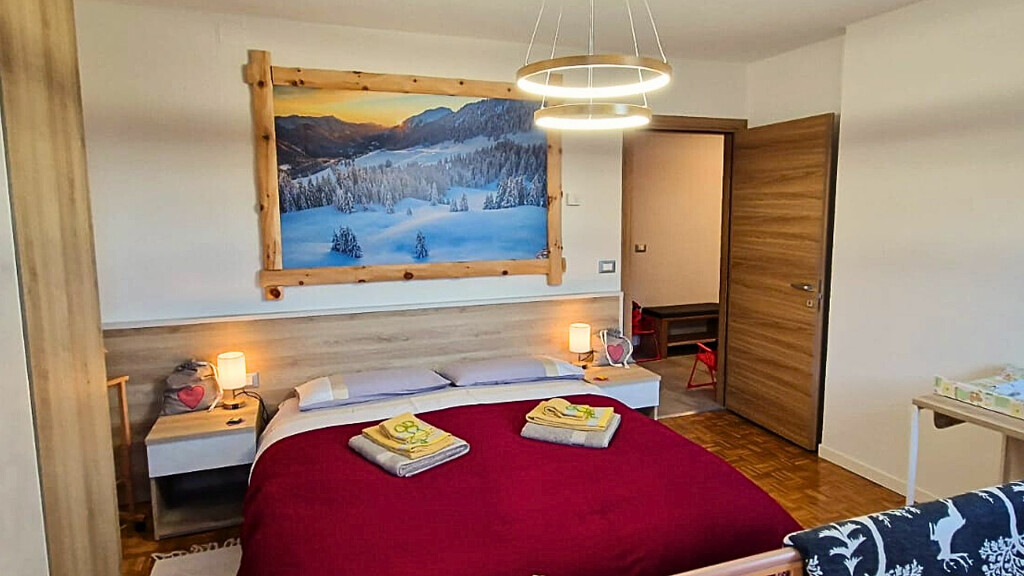
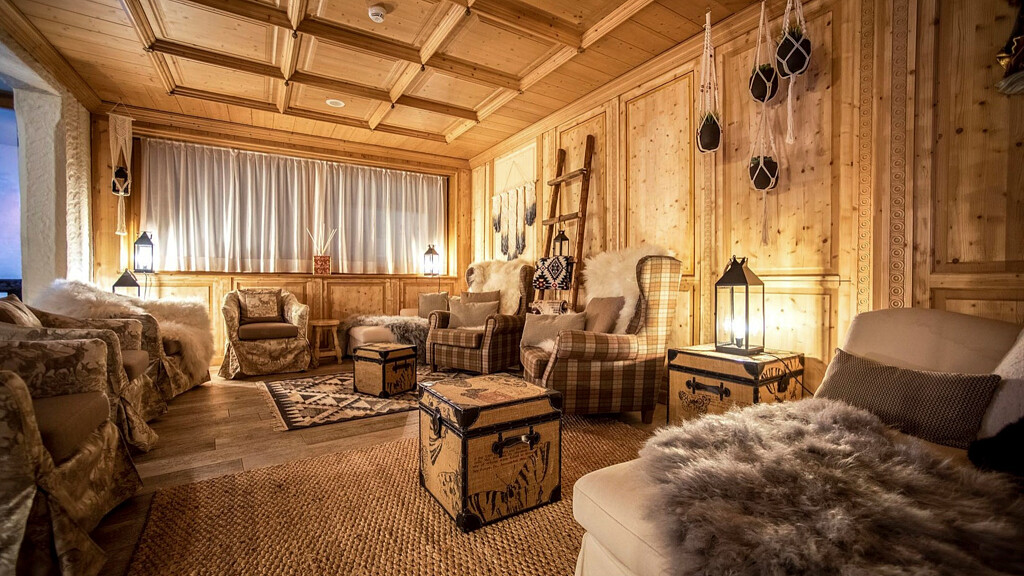


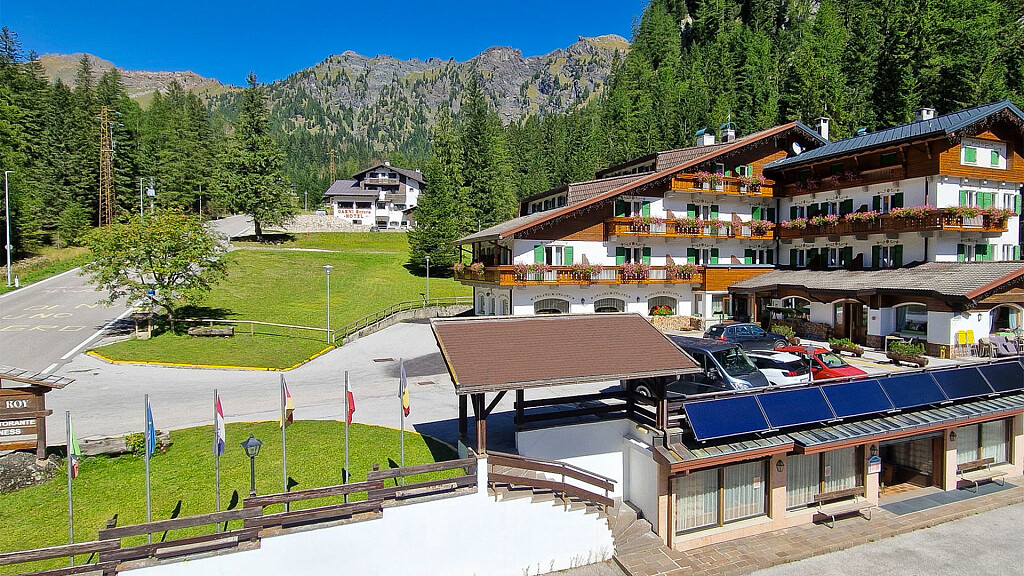

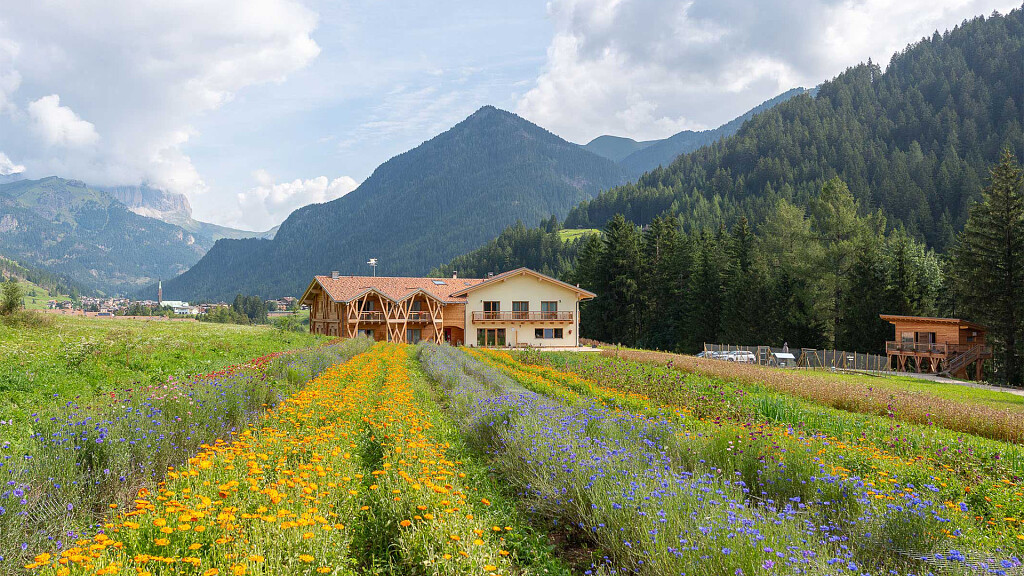

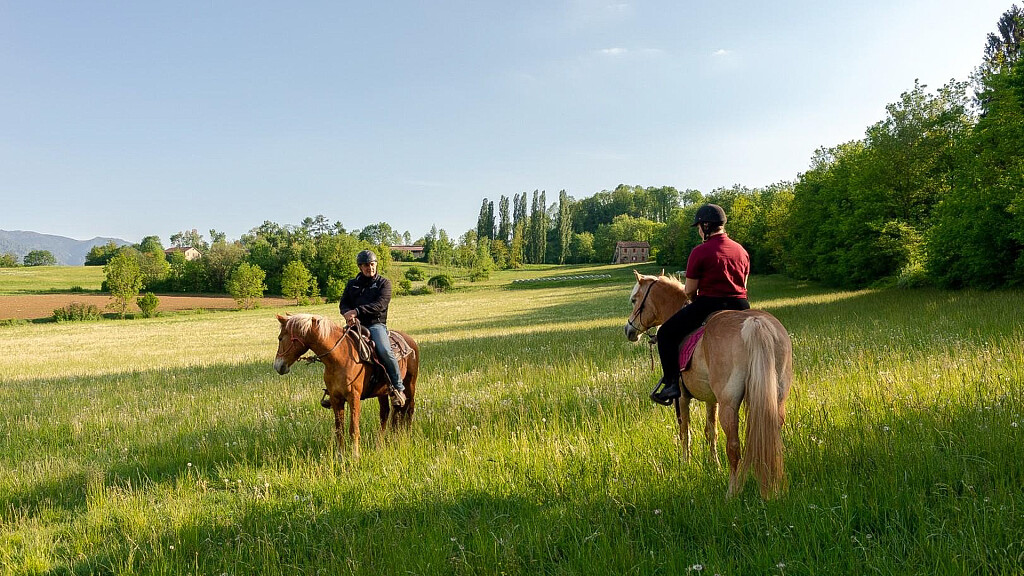

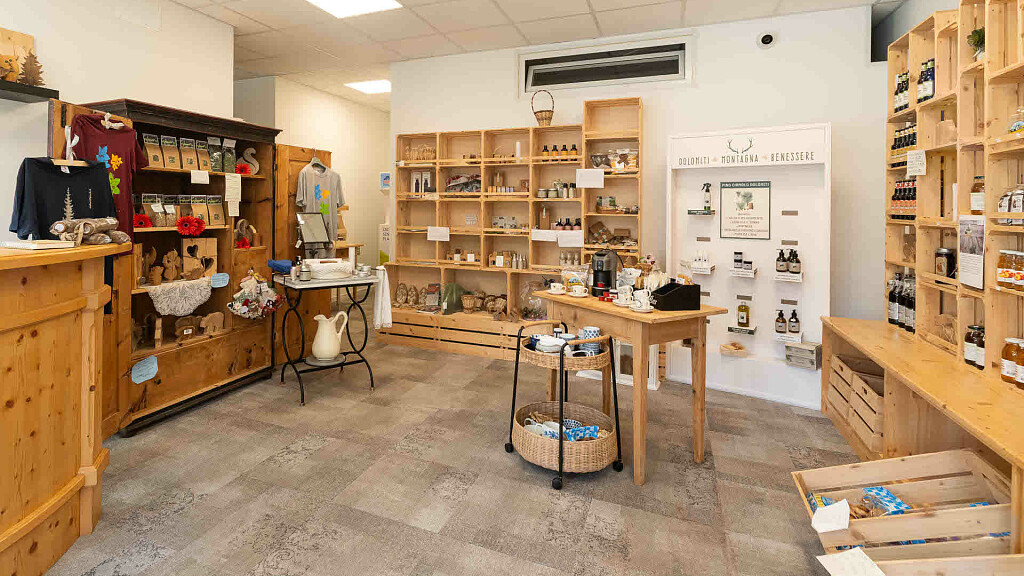


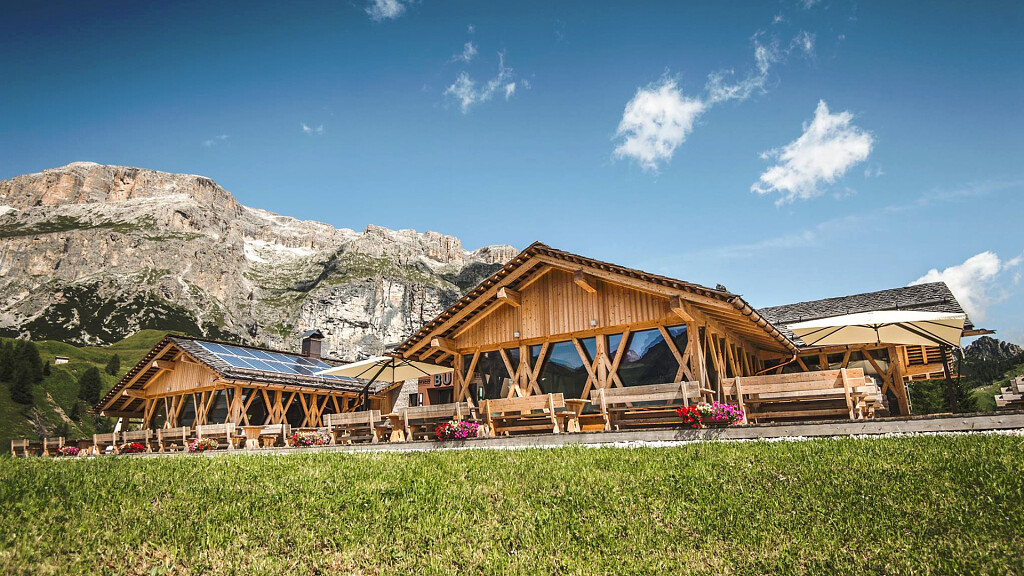
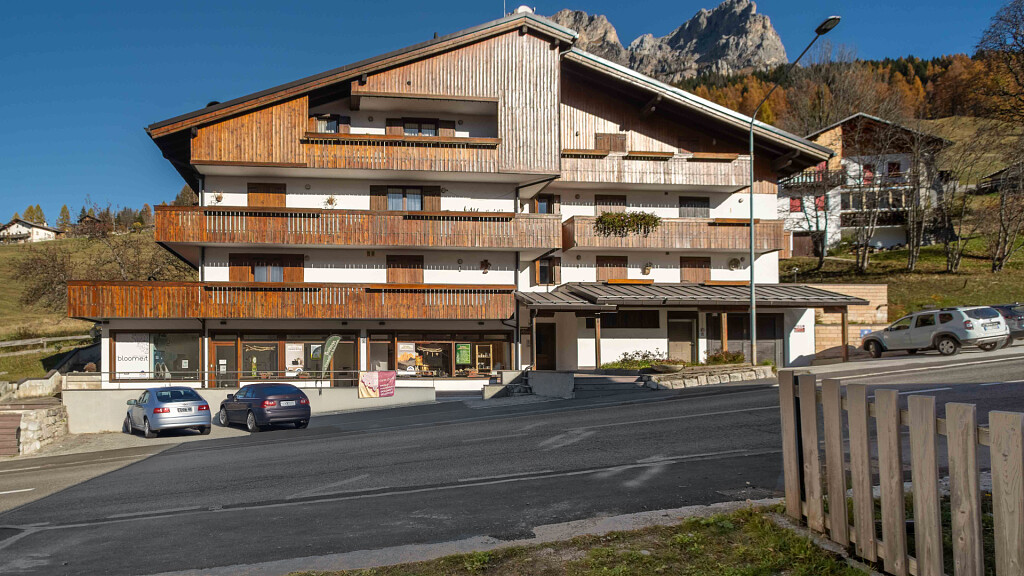

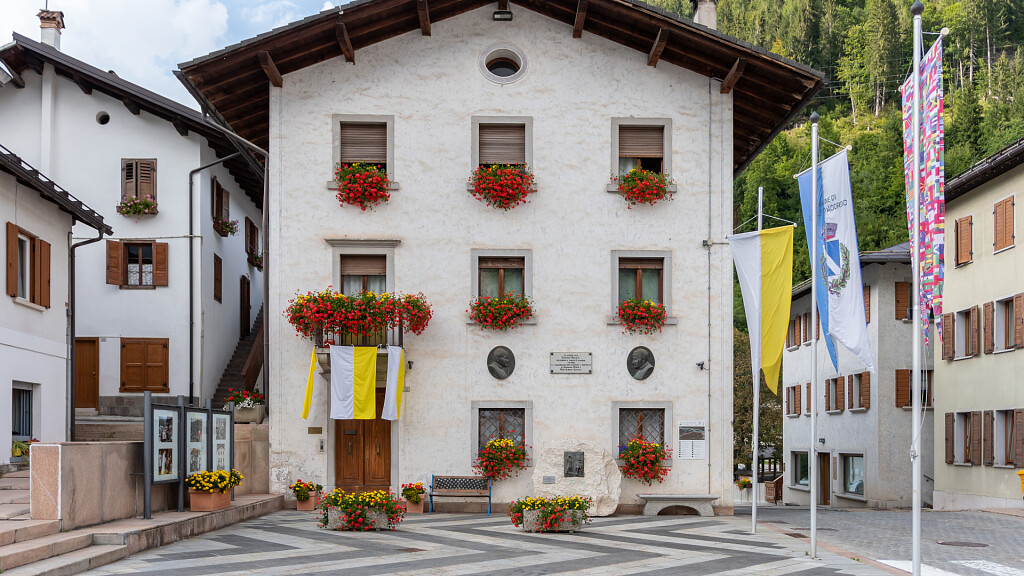
-tablet.jpg)

